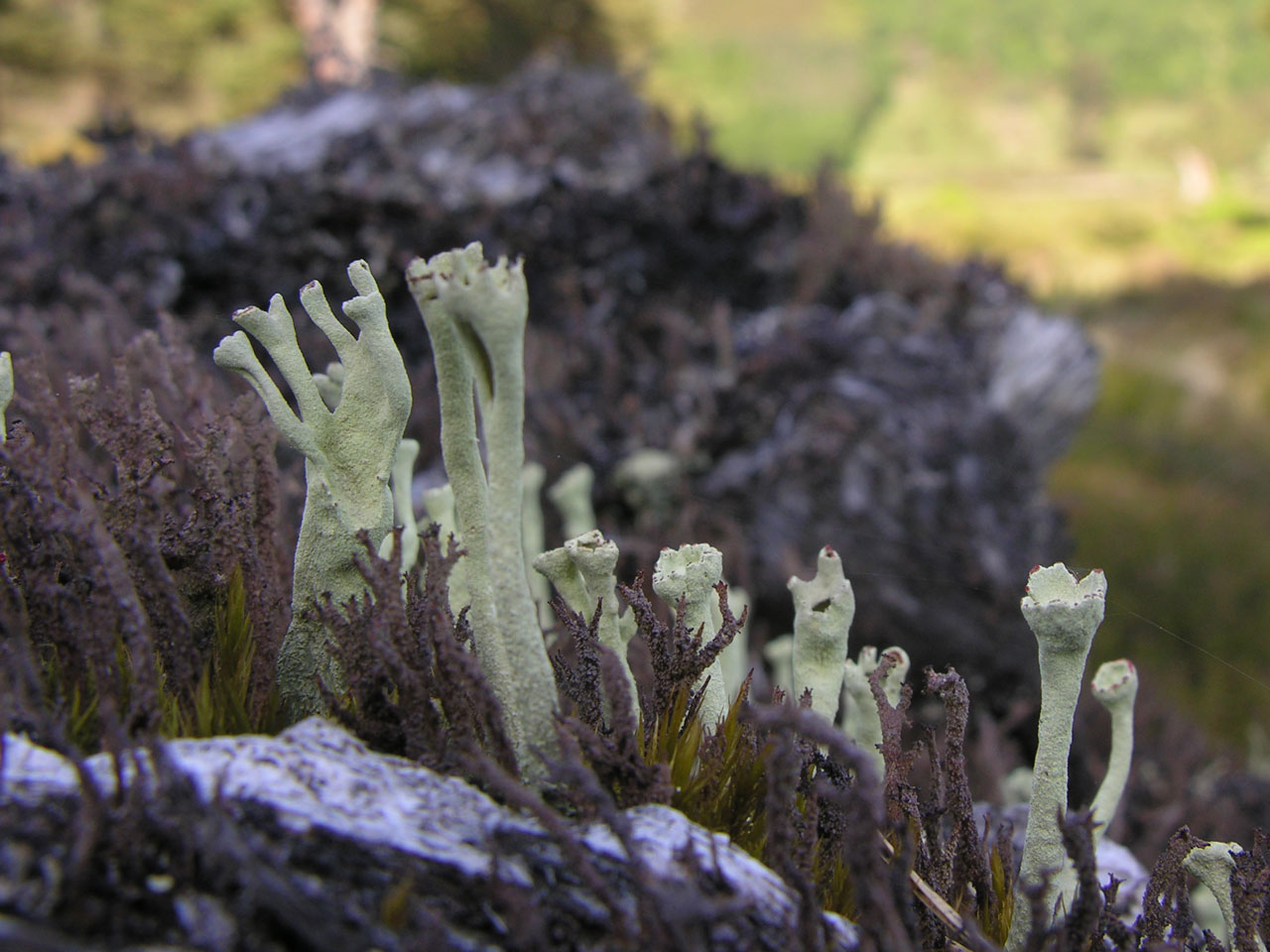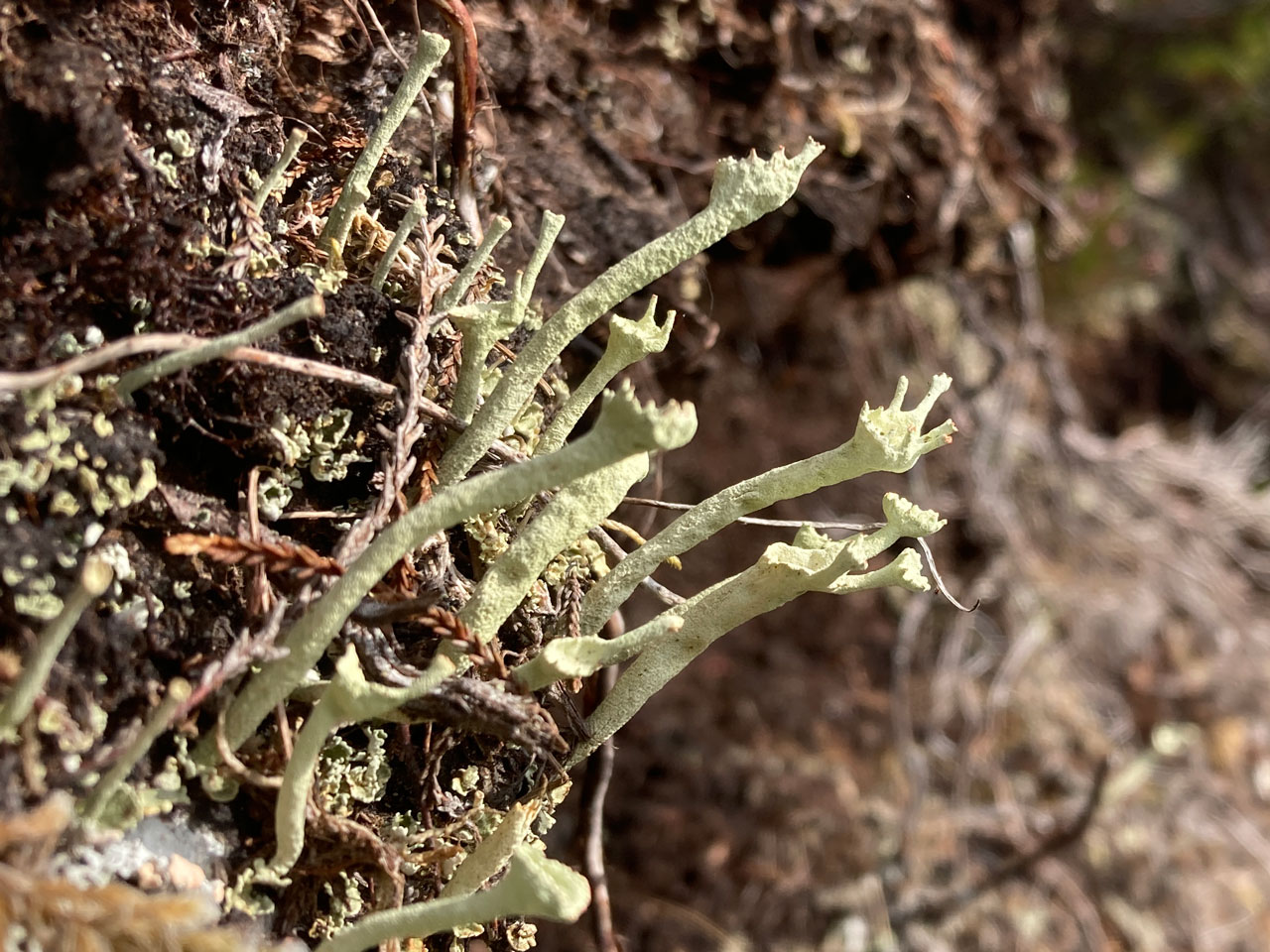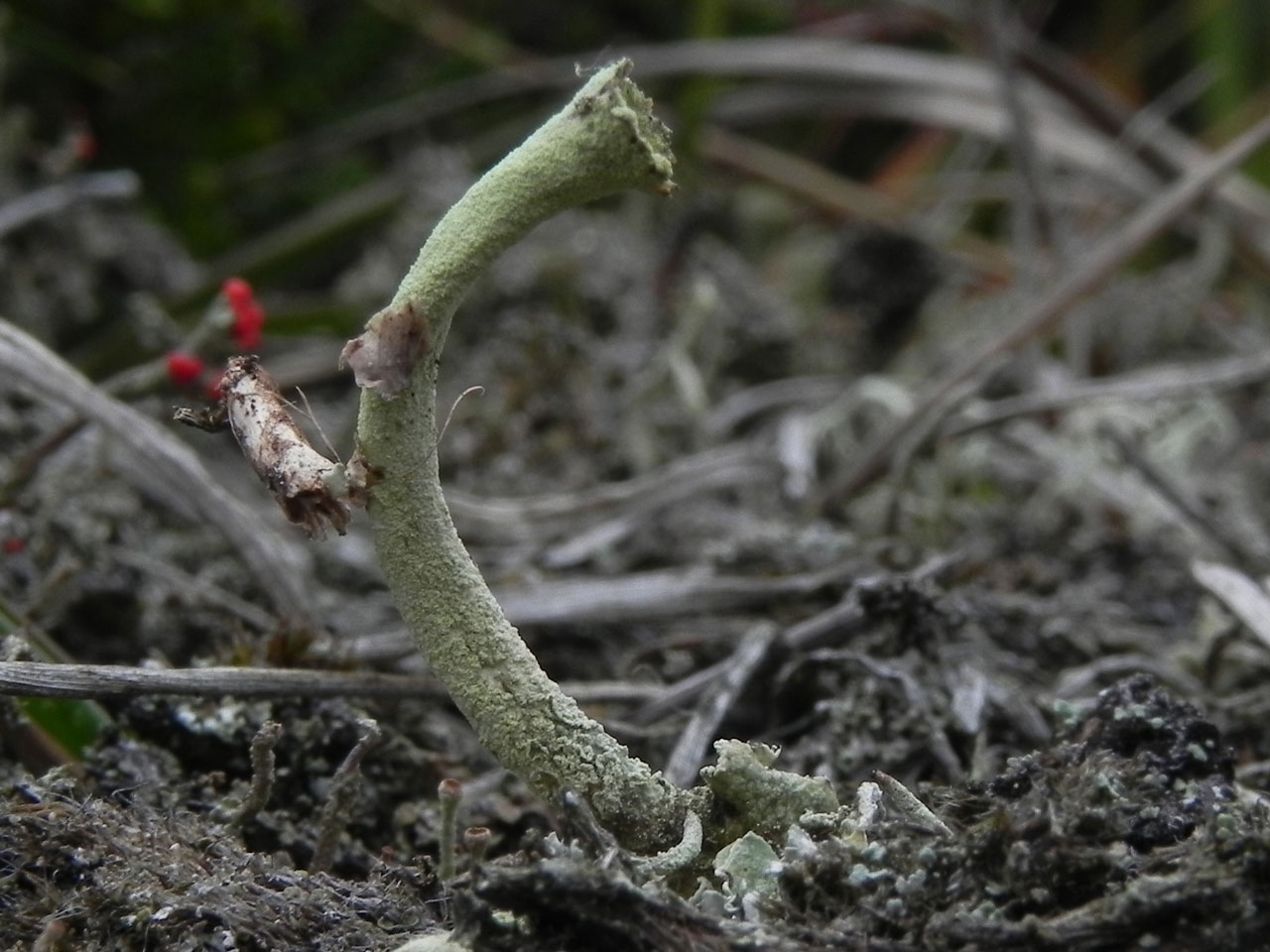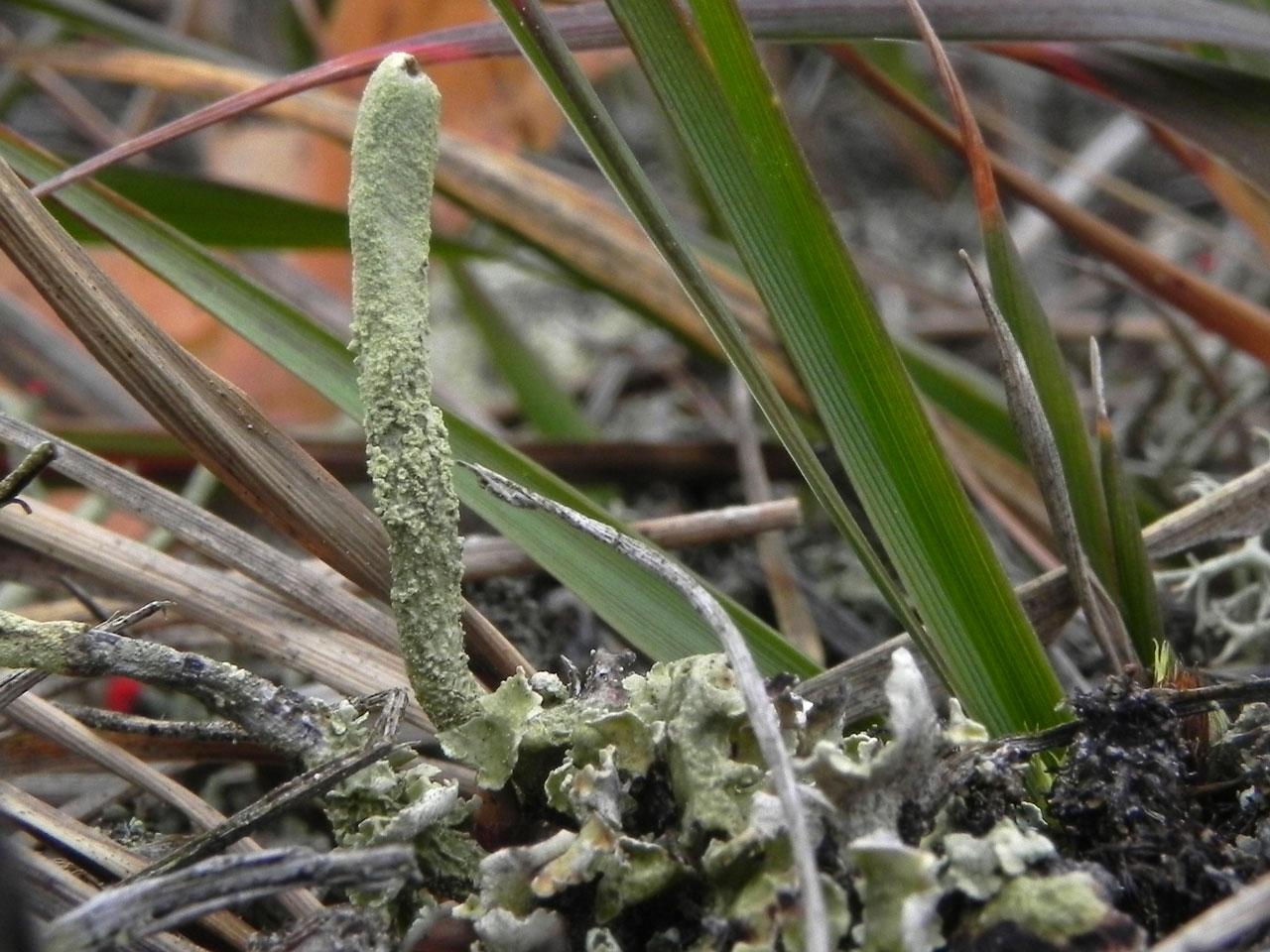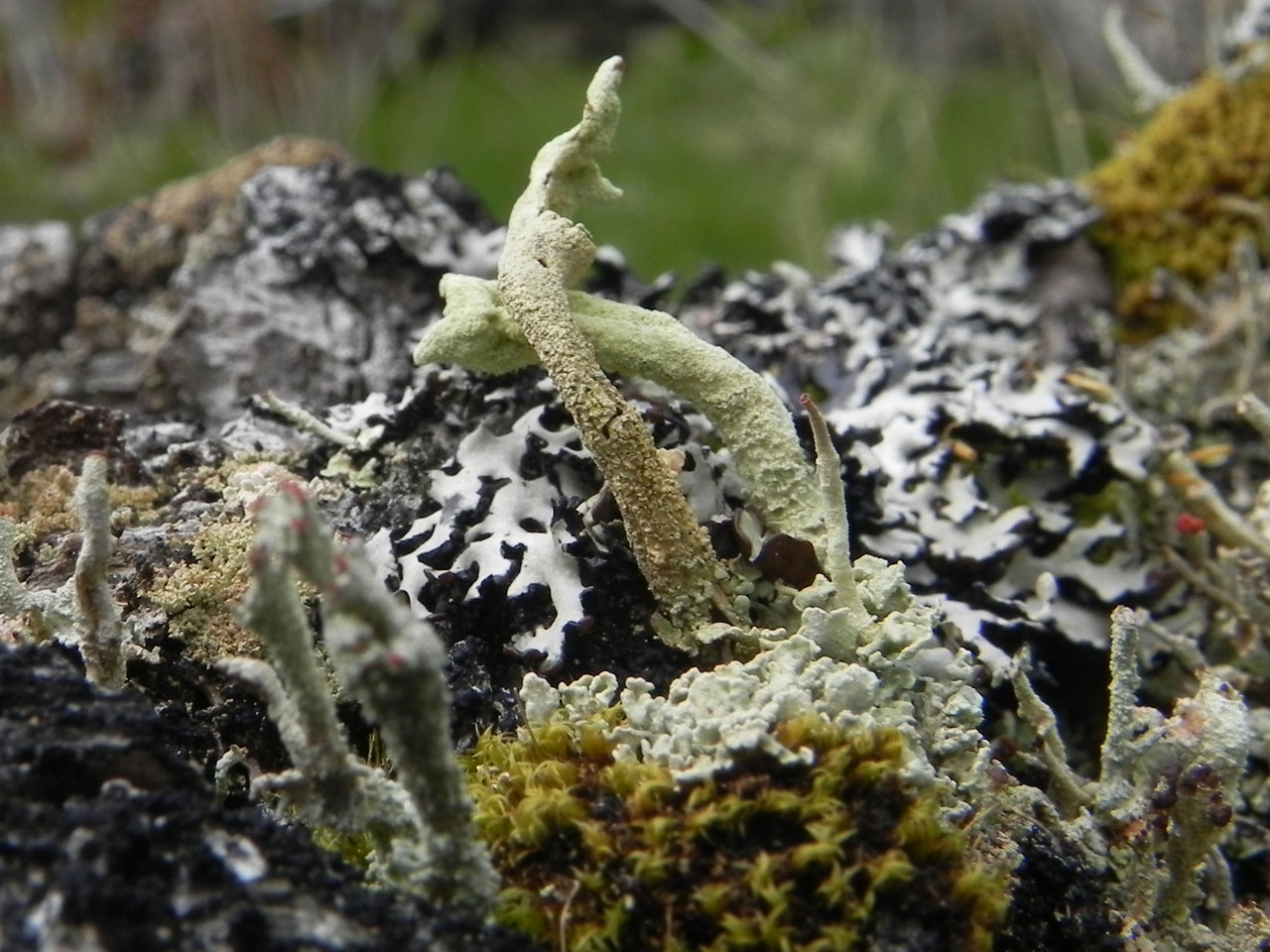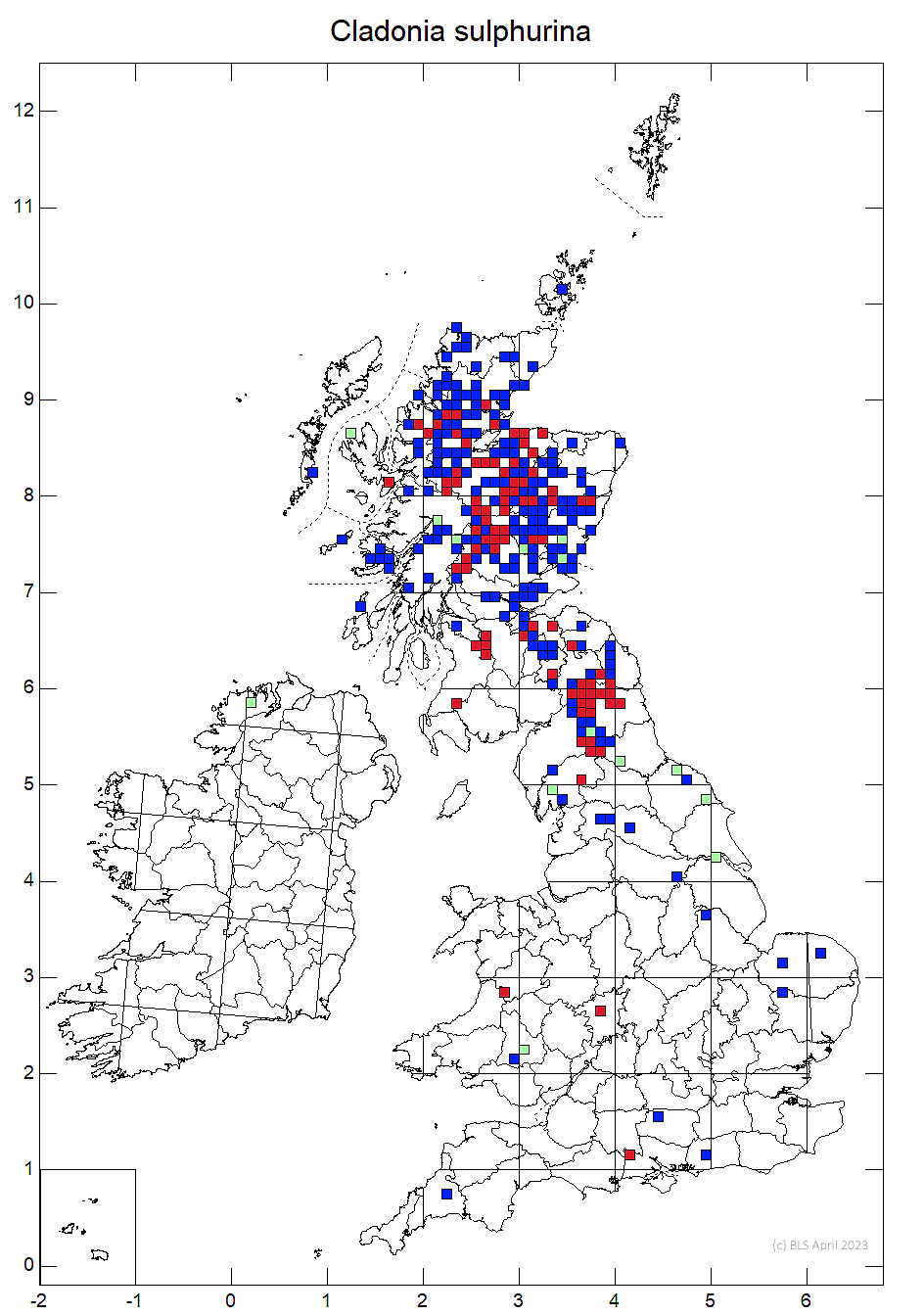A distinctive Heathtail Cladonia with yellow to yellow-green podetia covered in fine soredia, usually with pointed apices, but occasionally with narrow cups. The podetia are usually distorted and lacerate. The soredia are UV+ bright white, which distinguishes this species from the rather similar but very rare Cladonia deformis which is UV–. A northern and eastern upland species found on peat and sometimes dead wood.
Podetia to 5 cm tall, yellow to grey- or yellow-green, with ± pointed apices, unbranched, usually conspicuously longitudinally lacerated, particularly in the upper part, rarely with narrow, ± regular cups, slightly wider than the main podetia, ± farinose-sorediate throughout, or often with a 1–2 mm corticate area at the base, which is often ± squamulose. Basal squamules often large, 2–8 mm wide, ± rounded, the lower surface white, often yellowish to red-brown (K+ purple) towards the base, occasionally sorediate, horizontally spreading or ± ascending. Apothecia and pycnidia red, at the tips of podetia; rarely fertile. Thallus C–, K–, KC+ yellow, Pd–, UV+ white (usnic and squamatic acids, ± zeorin, ± bellidiflorin).
The tall yellow-green podetia, often conspicuously fissured towards their apices, are particularly diagnostic. Older records of Cladonia deformis probably refer to this species; it has UV– thalli.
On montane and (less frequently) lowland heaths, also rarely on decaying thatch and well-rotted conifer wood.

Frequent, northern and eastern Scotland and north east England, extending very rarely to S. England and Wales.
Very rare to the south of its core area of distribution.
Pino-Bodas, R., Sanderson, N., Cannon, P., Aptroot, A., Coppins, B., Orange, A. & Simkin, J. (2021). Lecanorales: Cladoniaceae, including the genera Cladonia, Pilophorus and Pycnothelia. Revisions of British and Irish Lichens 19: 1-45. Link
Text by Neil A Sanderson, based on Pino-Bodas et al (2021)
